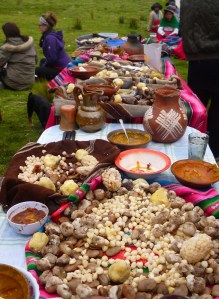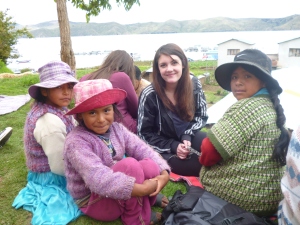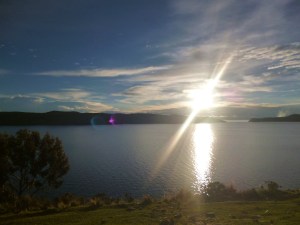Isla de la Luna
After two weeks in Bolivia, one of the most striking features is the scenery. Walking around La Paz, it would seem that from every angle there is a beautiful view to be seen; from the centre, the houses which run to the outskirts and cover the hills with a backing of calm prominent mountains beyond that. Alternatively, when located towards the suburbs, in the hills, the heavily populated central regions are seen, the spiny high rise blocks of Sopocachi, roads over run with old Japanese mini vans, and the idiosyncratic pieces of rock which stick out at inopportune moments. The crater shape of the city allows for such incredible sights.
These sentiments were consolidated during the trip to Lake Titicaca. Whilst leaving La Paz and heading into El Alto (a poorer city located on the Altiplano above La Paz), the modest road provided striking views over La Paz where the whole city could be seen, houses smothering the region like a dropped silk scarf.
When arriving at Isla de la Luna, a small non-commercial island on Lake Titicaca, after a somewhat rough boat journey; the weather was overcast and slightly damp. Nevertheless the group was greeted by local music played by men from the island and a banquet of local food such as freeze-dried potatoes, maize, egg and fresh fish, presented on beautiful bright cloth. We were subsequently introduced to our host families and, after briefly settling in, we went on a tour of the island where we were told about the local plants and their medical properties and the ancient Inca remains.

Apthapi, typically an exchange of culture and food between the different attendees, on Isla de la Luna
It is fair to say that the prior bleak weather merely allowed for further appreciation of the beautiful island as the sun came out and the island rapidly warmed up. Upon climbing the hill, not an easy task at high altitude (around 3900 metres above sea level), we were introduced to amazing sights: the clear blue waters of Lake Titicaca, green hills speckled with plateaus of various crops which were constructed for ease of irrigation, and in the distance a jagged mountain range sprinkled with snow. The beauty failed to cease as the day drew to an end and the moonlight revealed a vast sky of stars, including a glimpse of the Milky Way, whilst in the distance pink lightning lit up the sky miles away.
The next day after breakfast we carried out various activities with our host families which, for us, consisted of herding sheep and llamas, taking the brightly decorated family boat out, and feeding their fish, preparing food and weaving bracelets with our ‘little sisters’ – in my opinion the most enjoyable task as despite the lack of verbal communication due to the language barrier, we managed to communicate through gestures as we took it in turns to complete a row of the bracelet each.

Alice Gaskell learning how to make bracelets with the children of her Aymara family on Isla de la Luna
Overall the weekend was a truly enjoyable experience, despite initial concerns about living in the countryside, this was definitely a once in a lifetime experience, and many of us were sad when leaving our Isla de la Luna families, especially after the final, spur of the moment dance carried out by both locals and guests. Our time on Isla de la Luna has made me look forward to what else Bolivia has to offer.
Written by Alice Gaskell
Edited by Liam Hilton
Posted on January 25, 2013, in ChildFund and tagged Apthapi, Aymara, fishing, Isla de la Luna, Lake Titicaca. Bookmark the permalink. Leave a comment.





Leave a comment
Comments 0